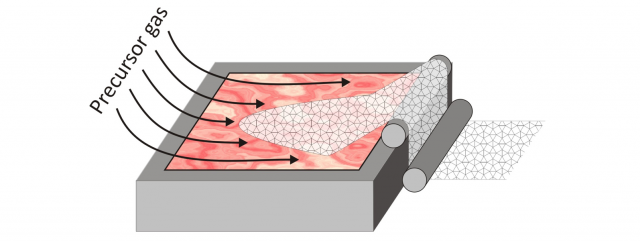Introduction to DirectSepa project
Two-dimensional materials (2DMs) such as graphene, germanene, h-BN, transition metal dichalcogenides and others are currently amongst the most intensively studied classes of materials that hold great promise for future applications in many technological areas. However, the main hurdle against practical utilization of 2DMs is the lack of effective mass production and transfer techniques of high-quality 2DMs to satisfy the growing demands for scientific and technological applications. The current state-of-the-art synthesis method of 2DMs involves the adsorption of gas-phase precursors on a solid catalyst. This process is slow by nature, inefficient, and environmentally unfriendly. The produced 2DMs are often defective, contaminated, and suffering from very high residual stress, compromising their unique physio-chemical properties for the expected applications.
During our ongoing FET-Open project of LMCat, we have studied a radically new synthesis method for growing 2DMs which employed a liquid metal catalyst (LMCat) instead of a solid one. Our recent experimental and theoretical evidence suggests that using LMCats bears the prospect of 2DMs with unprecedented quality and production speed. The major success of this project has motivated us to follow up on this via this industrially oriented proposal with the aim of demonstrating the possibility of continuous graphene production via performing its simultaneous growth and its direct separation from the LMCat. This is to increase the technology readiness level from TRL2 in the current FET-Open project of LMCat to TRL4 at the end of the proposed FET-Proact project of DirectSepa. To tackle the unprecedented challenge of direct separation, a multidisciplinary scientific and industraial consortium with ample experience in this due to its past involvement with the FET-Open LMCat project, was put together. Success of the DirectSepa project (1 Jan. 2021 to 31 Dec. 2022) has the potential to revolutionize the 2DM production market.
DirectSepa is funded by the FETPROACT-EIC-06-2019 RIA grant of Horizon 2020 programme.
Learn about the workpackages here

